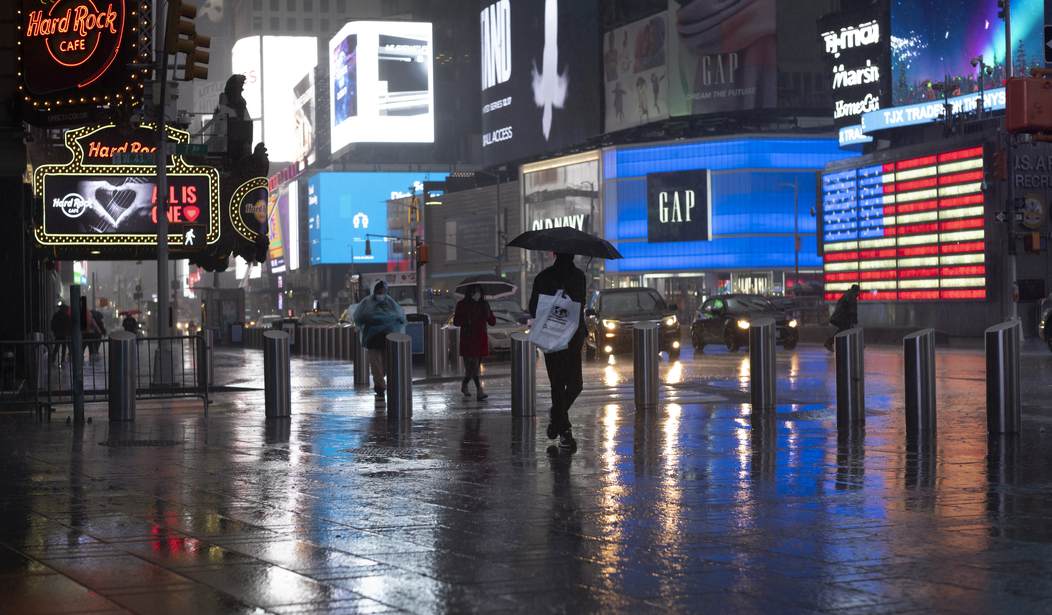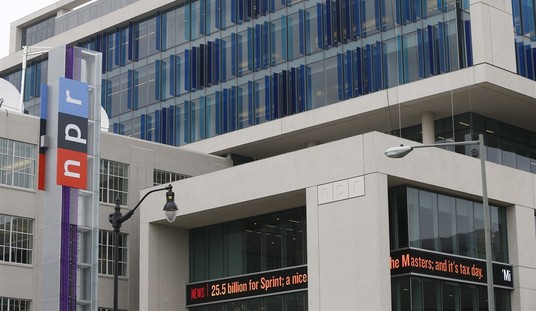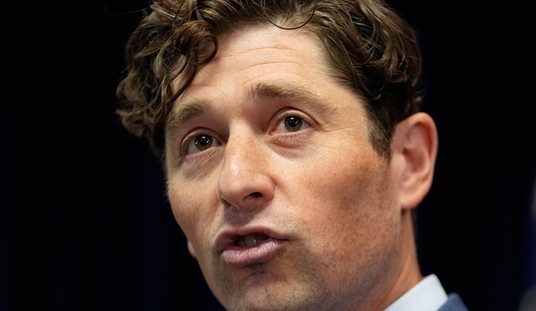… how much of that represents a real gain? The Commerce Department reported a sharp increase in consumer spending in October, twice the rise in September. However, the seasonally adjusted figure lacks another key adjustment:
Advance estimates of U.S. retail and food services sales for October 2021, adjusted for seasonal variation and holiday and trading-day differences, but not for price changes, were $638.2 billion, an increase of 1.7 percent (±0.5 percent) from the previous month, and 16.3 percent (±0.9 percent) above October 2020. Total sales for the August 2021 through October 2021 period were up 15.4 percent (±0.7 percent) from the same period a year ago. The August 2021 to September 2021 percent change was revised from up 0.7 percent (±0.5 percent) to up 0.8 percent (±0.2 percent).
Retail trade sales were up 1.9 percent (±0.4 percent) from September 2021, and up 14.8 percent (±0.7 percent) above last year. Gasoline stations were up 46.8 percent (±1.6 percent) from October 2020, while food services and drinking places were up 29.3 percent (±3.9 percent) from last year.
This is good news when looking at the results from the Q3 GDP report. The anemic 2.0% annualized growth rate suffered from a sharp turndown in consumer spending, with PCEs only growing 1.6% in the quarter. That decline followed two quarters of double-digit growth in PCEs, both associated with two tranches of direct stimulus from Congress. The Q3 report strongly suggested that neither tranche did much more than shift demand from the future, perhaps especially the third tranche pushed by Joe Biden.
If today’s report shows consumer demand rebounding, that will be good news indeed. However, today’s figures are not adjusted for inflation, as the AP’s Christopher Rugaber reminds readers:
Retail sales rose a seasonally adjusted 1.7% in October from September, the U.S. Commerce Department said Tuesday. That’s up from 0.8% in the previous month.
Solid hiring, strong pay raises, and healthy savings for many households are underpinning robust spending. Americans are also still buying more cars, furniture, and other goods than they did before the pandemic, which is overwhelming U.S. ports and shipping firms and pushing up prices.
Tuesday’s retail sales figures aren’t adjusted for inflation, which rose 0.9% in October, the government said last Wednesday.
It’s a bit simplistic to use these numbers to declare that half the gain is just price inflation, but that’s as good a guide as we’ll get. Even a jump of 0.8% in real terms would be a decent rebound in consumer sentiment from the miserly Q3 numbers, after all. And it’s true that the numbers beat expectations, for whatever that’s worth:
Retail sales, a measure of how much consumers spent on goods ranging across categories from autos to sporting goods and food and gas, increased 1.7% for October, compared with 0.8% the previous month.
Excluding autos, sales also increased 1.5%, according to the Census Bureau advance estimate.
The two numbers were above the Dow Jones estimates of 1.5% for the headline print and 1% for the core sales gain.
However, the CNBC report includes a nugget that at least hints that the overall gain might not be attributable to consumer sentiment:
Online shopping posted the biggest relative gain for the month, rising 4% and good for a 10.2% gain from a year ago. Soaring prices at the pump pushed gasoline sales up 3.9% in October. Year over year, sales increases at stations have surged 46.8%.
Fuel prices are force multipliers in the consumer distribution chain. Every stage at which goods (and some services) move imposes fuel costs, so as the price of fuel rises, the increases build up in the final price of the goods to the consumer. A raw inflation figure might tend to underestimate that force multiplication of cost, especially when it applies across a broad range of goods that consumers see as staples, such as food and household products such as cleaners, paper goods, and so on.
Still, while we can quibble about the amount of real gain this represents, there’s no denying that consumers are spending. The Wall Street Journal predicts a strong holiday season based on these figures, in part because of a saving spree during the pandemic:
The elevated spending levels suggest solid holiday sales this month and next. Consumers have said they are worried about inflation, which hit a three-decade high last month, but planned to continue spending.
“Consumers say they’re pessimistic—we have had very high inflation—but the truth is they’re in very good shape right now,” said Gus Faucher, chief economist at PNC Financial Services Group. He cited the roughly $2 trillion in excess savings that households have accrued since the start of the pandemic, as well as low interest rates and an improving labor market as reasons for the robust demand for goods.
The combination of strong demand, snarled supply chains, higher prices and an unbalanced labor market is making for an unusual holiday season where record sales may be accompanied by shortages and long waits for goods. Inflation may also start to cut into demand for consumers with lower incomes who may put off purchases due to price increases, economists say.
I’d predict that we’ll see more holiday spending directed at services rather than goods. That might take the form of entertainment, or of personal services such as spas and similar consumer experiences. Services aren’t as impacted by supply-chain woes and are therefore more reliable for gift-giving in this very strange holiday season. Buying tickets to the theater may make more gifting sense than buying the formal wear one might wear to the event, for instance.
However, that large overhang in savings likely has a flip side. The longer and higher inflation runs, the less buying power it will have. That might in itself prompt more spending in the near term as people realize that prices will continue to sharply rise over the next year, but eventually inflation will create an aversion to consumer spending as people conserve for future price shocks on core goods. If this rate of inflation continues past the holidays, expect a bleak 2022.








Join the conversation as a VIP Member